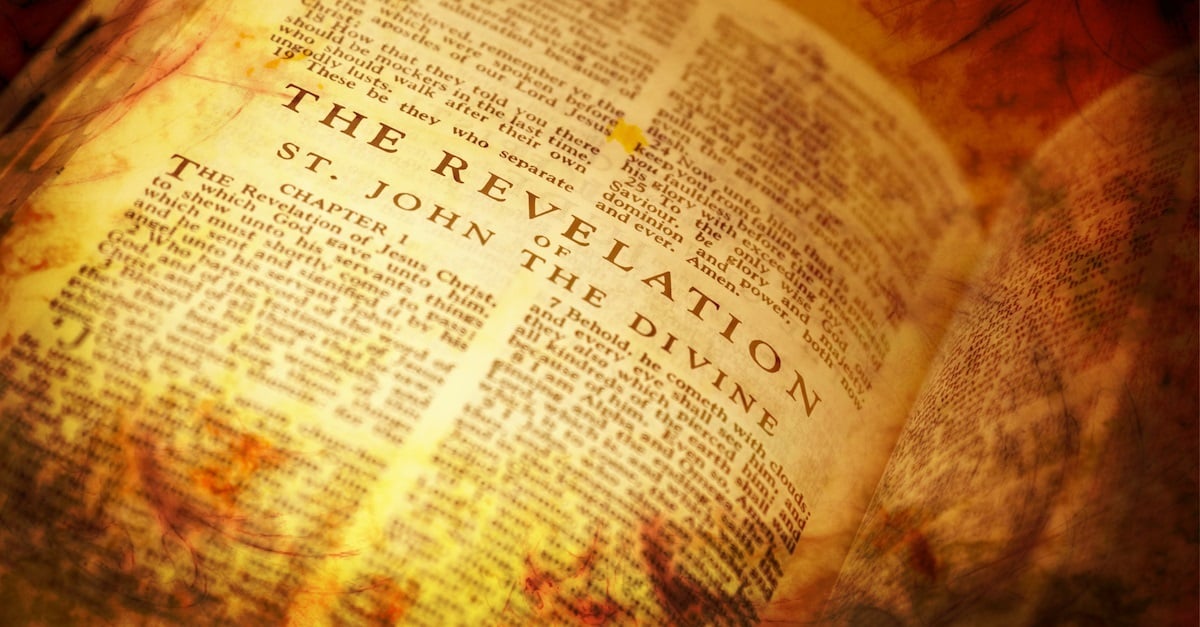
Revelation 1:19 "Therefore write the things which you have seen, and the things which are, and the things which will take place after these things."
Introduction:
In the last couple of posts, we have introduced readers to the variety of issues surrounding the standard approaches and interpretations of the Book of Revelation. How we interpret the contents of John's Apocalypse will steer how we read it and apply it to our lives. In today's post, we want to consider ways in which we can outline the Book of Revelation. Outlines of the books of the Bible can aid greatly in teaching or preaching situations. Also too, having an outline of a Book like Revelation can help the reader have a "map" as they work their way through its contents
Methods For Outlining For The Book Of Revelation
Whenever you consider the 22 chapters of Revelation, most people will take as their point of departure Revelation 1:19. Revelation 1:19 gives the reader a three-fold outline:
1. "The things which you have seen" Revelation 1-3
2. "The things which are now/are yet to come" Revelation 4-5
3. "The Things yet to come" Revelation 4-22
In some instances, you may see even a two-part outlining approach:
1. "The things which you have seen" Revelation 1-3
2. "The things which are to come" Revelation 4-22
Since we had covered various theological approaches to the Book of Revelation in the last post, I will simply ask readers to click on the following link to review in the footnotes of the previous post the terms that follow in the next two paragraphs: http://www.growingchristianresources.com/2018/06/surveying-various-interpretations-of.html. If readers would rather skip the next two paragraphs, they may do so and go onto the heading that features a proposed outline of the Book of Revelation.
Both Classical and Dispensational Premillennialists will typically see the Book of Revelation (particularly chapters 6-20) unfurling in a sequential, step by step fashion. Hence, the relationship between the various seal, trumpet and bowl judgments tend to represent a linear unfolding of future prophetic events. Other Pre-millenialists tend to see the book, especially in Revelation 4-22, unfold in more of a "winding staircase" fashion, meaning that the Apostle John is presenting the same sequence of history over and over again in greater and more intense detail through the respective seal, trumpet and bowl judgments of Revelation 6-19.
When we consider Amillennial and some Post-millennial interpreters , the staircase model tends to be the preferred outlining approach. Other types of Post-Millennial interpreters tends to view Revelation 6-19 as a summary of God's overall program for history, with no immediate connection to any one history or event (also called the idealist view of Revelation). These are but samples of the various ways people have attempted to outline and understand the book of Revelation.
A Proposed Outline Of The Book Of Revelation
This author finds the Book of Revelation presenting God's truth as follows:
1. Christ and His Church. 1-3
2. Christ and His Throne. 4-5
3. Christ and Human History. 6-18
4. Christ's Return to Reign. 19-20
5. Christ in Eternity. 21-22
The first five chapters tend to take the reader back and forth between the heavenly upper story of God in eternity (chapters 1, 4&5) and the details of what is happening to the seven churches here on earth (chapters 2&3). This author finds the seven churches to be seven, literal churches situated in Asia Minor (modern-day Turkey) that also provide some instructive patterns for church-life today.
With respect to chapters 6-18 of Revelation, this author would favor seeing the sequence of judgments as a repeated retelling of the same seven-year future time-frame called the Tribulation period. Without diving into inordinate detail, Revelation 6-18 could be sub-divided as follows:
A. How Christ will deal with the nations. Chapters 6-11
B. How Christ will deal with Israel. Chapter 12
C. How Christ will defeat the anti-Christ and the rebelling nations. Chapters 13-18
Revelation 19-20 serves to bring to a conclusion the future historic cycle God will unleash on planet earth. Again, readers can appeal to the last post to get a grasp on how various interpreters have viewed Revelation 19-20. This author sees history (this present age) closing with Christ's return, at which point He will return with an already raised and glorified church to restore and purify the nation of Israel (see Daniel 12:1-3; Romans 11:25-26). These particular events will comprise Jesus' 1,000 year reign upon the earth, concluding in the Great White Throne Judgment, the resurrection of the wicked to judgement and final judgement of Satan into the Lake of Fire (see John 5:24-25; Revelation 20).
Once the thousand-year reign of Christ concludes, Revelation 21-22 takes the reader into the future eternal state. These two final chapters of Revelation (and the Bible) describe the glorious "New Heavens and New Earth" spoken
of in 2 Peter 3:13, wherein Peter writes:
"But according to His promise we are looking for new heavens and a new earth, in which righteousness dwells."
Closing thoughts:
These last few posts have dedicated time to introducing readers to the various interpretive questions surrounding how we read the Book of Revelation. The value of considering the interpretive issues is in knowing the right questions to ask. If we ask the appropriate questions, we will then arrive at the appropriate conclusions. Thankfully, the Christian has the Holy Spirit to aid them in wading through the many options. The differing viewpoints represent the need of every generation of God's people to expound and explain the contents of this book to the next generation. The point of offering an outline in today's post was to provide a map by which we may navigate through the Book of Revelation. Although Revelation can at times present challenges, it comes with the promise of blessing to those who take the time to read it, hear it and live it (see Revelation 1:1-3).
